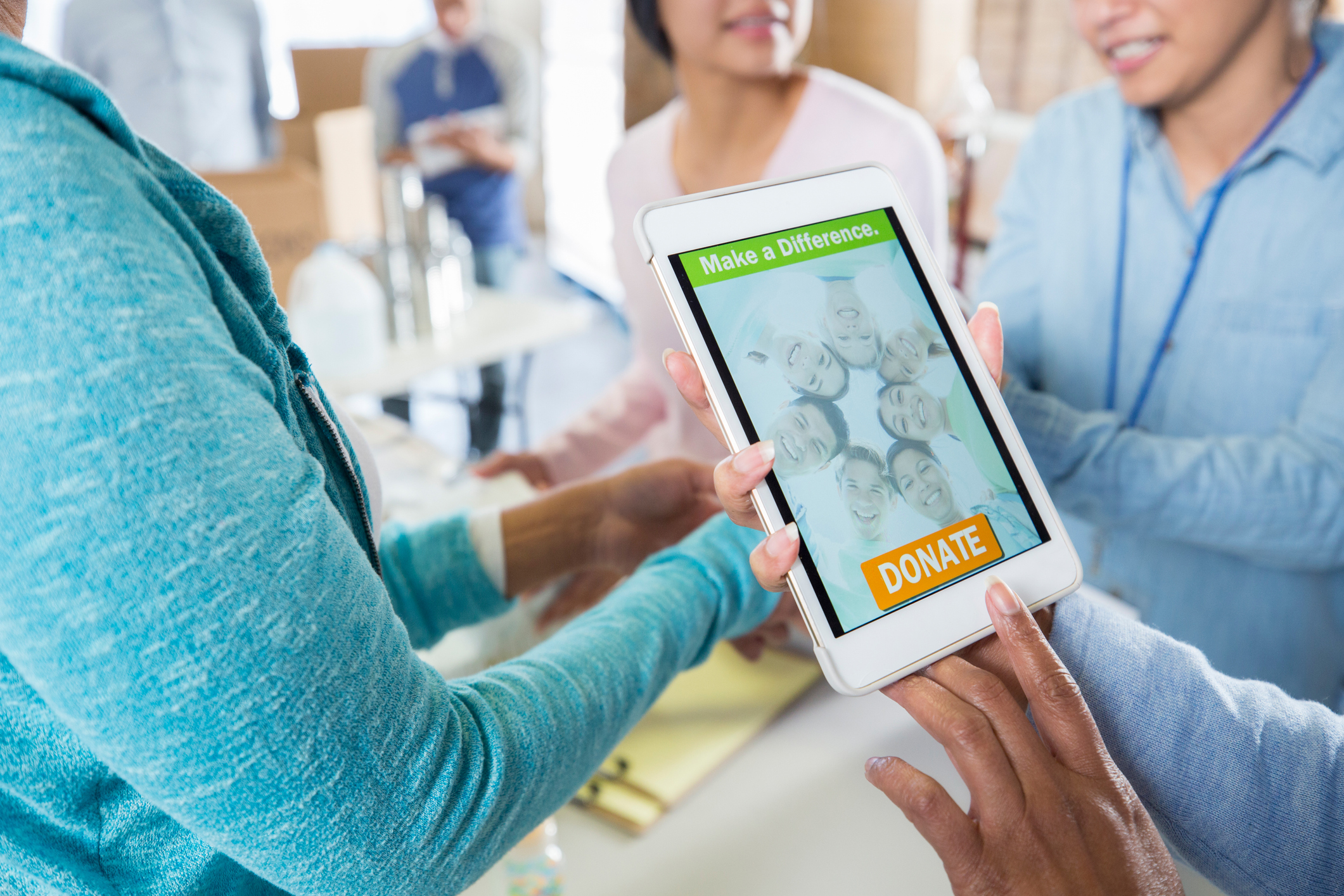November 8, 2019
 by John Killoran / November 8, 2019
by John Killoran / November 8, 2019

As a nonprofit professional, you've likely researched effective donor management strategies extensively.
In fact, you may already leverage a couple of different technologies to help you streamline the process. But are you using your donor management technology to its fullest potential?
There are a number of donor-specific platforms on the market that can help your management strategy. Plus, some software will even give you powerful insights into creating surefire asks and retaining donors. Even if you’ve already invested in a few different tools, there are ways to ensure your team doesn’t overlook useful features.
Donors are the reason your nonprofit can continue working towards its mission. Don’t let them fall by the wayside—instead, develop your relationships with them by leveraging technology. They’ll become more involved and feel as though their support matters to the organization.
Whether you’re learning how to start a nonprofit or you’re just revamping your current strategy, throwing technology into the mix can majorly enhance your donor management skills. If you’re ready to boost your donor management tech skills, let’s get started!
For a nonprofit supporter to fall under the donor category, they have to make a contribution. When enticing them to make a gift, you need to create a straightforward, engaging process, both online and offline.
At some point, supporters will likely come across your donation page. After all, most gifts are made online. Filling out this form is the last step in the donation process, so you don’t want to lose them here. To design an engaging, navigable donation page, do the following:
Remember to include some type of authentication. If donors don’t know if their private payment information is safe, they’ll likely back out, leaving you without the funds you need. If your technology doesn’t include all of these vital features, it may be time to make the switch. Otherwise, you’ll never secure enough donation revenue.
Do everything you can to create a safe, visually appealing donation page. That way, donors hit submit without thinking twice. A streamlined donation experience is a necessary foundation of long-term relationships with donors.
Once you’ve secured donations, it’s time to organize your vital donor data. As your supporter base grows, doing this by hand becomes impossible. Not only will it waste team members’ time, but it won’t be nearly as organized or secure as it could be.
Instead, choose a comprehensive nonprofit CRM system that integrates with your existing software. This way, it’ll be a one-and-done deal. You won’t have to worry about transferring your donor data to each of your systems when your CRM does it for you.
Once a donor submits a donation online, the information they provide should be reported to your system. Each donor should have their own profile, comprised of, at a minimum, these data points.
Name
Mailing address
Contact information
Preferred means of contact
Best of all, your CRM shows you a quick snapshot of donors’ activity, showing how well your fundraising tactics are doing and what areas need improvement. From here, you can conduct prospect research, reach out to potential major donors, and secure more donations.
While it’s important to track donor basics, you’ll also want to go a bit more in-depth when gathering data. You’ll need to track the following aspects of your prospects.
|
Prospect research, simplified by technology, is the process of gathering all this information. It gives you powerful insights into who your donors are, why they give, and the best times to engage with them.
Typically, CRMs don’t come with a donor prospect research tool already equipped. There are plenty on the market though, so look for one that can integrate with your database. That way, you don’t have to worry about transferring data to a new system.
Once your team has gathered this data, don’t just let it sit there with no purpose—use it to personalize your asks. Your donors will know your organization truly cares for them if you take the time to get to know them.
Remember, donors won’t want to share their personal info with you if it’s not protected. Make sure to stay up-to-date on nonprofit data security best practices.
Donor data gives you powerful insight into who your donors are and how to engage them. Use a CRM that organizes this data, so you don’t have to do it by hand. Then, conduct prospect research to learn even more about donors.
Social fundraising, specifically peer-to-peer campaigning, is a great way to involve all of your supporters. It can take your fundraising strategy to the next level—if most of your supporters live online, an online campaign can create a substantial jump in revenue.
When recruiting volunteer fundraisers, start with your supporter base. This means your donors and volunteers. Peer-to-peer fundraising engages donors on a whole new level. It enables them to become more involved, rather than simply asking them to fill out a donation form. By getting their hands dirty and raising the money themselves, donors will feel more connected to your cause, boosting your donor retention rate.
While social fundraising may seem simple, it takes more than just creating and sharing a crowdfunding page. From planning the campaign to building pages to keeping volunteer fundraisers motivated, there’s a lot that goes into it.
Thankfully, there’s dedicated fundraising software that streamlines and quickens the process, so you can get back to what matters: securing donations and fulfilling your mission. Boost your donor involvement through social fundraising technology with the following tips:
Your donors may be engaged with your campaign, but are they motivated as much as they can be? Develop a competitive spirit among your volunteer fundraisers—when planning your next peer-to-peer campaign, experiment with these gamification tools:
Gamification motivates your donors and encourages them to do more for your organization (and have a little fun in the process).
|
TIP: Peer-to-peer fundraising is a great way to involve your donors and make them feel more vital to your cause. Take it a step further by incorporating gamification tools to make them more invested. |
If you’ve been in the nonprofit sector for a while, you’ve likely encountered corporate giving. If not, you’re missing out on a huge revenue and retention opportunity.
Essentially, corporate giving is a type of charitable giving—a way for companies to give back to their communities by supporting local nonprofits. It’s part of the corporate social responsibility (CSR) phenomenon. Companies practice CSR through matching gifts, volunteer grants, and fundraising matches among various other programs.
In terms of donors, matching gifts are a goldmine and can majorly enhance the donor experience. When a donor is eligible for a match through their company’s giving program, their employer will double (or sometimes even triple) the gift.
In order to properly leverage matching gifts in your donor management strategy, your team will need to become fluent in corporate giving practices. Then, you’ll need to invest in technology to help you pinpoint these opportunities.
For instance, a matching gift database will help you do the following:
| Locate and engage with match-eligible donors |
| Keep up with where they are in the match process |
| Show you all available guidelines for major area employers |
| Provide you with companies’ matching gift forms and instructions |
Some databases will show you all the same information for volunteer grants, too. In other words, you can increase your volunteer retention in addition to donor retention. Then, by combining your knowledge of donors’ match-eligibility with prospect research data, you can create a personalized ask that’s sure to provoke a positive response.
Think of it this way: why wouldn’t donors want to multiply their gifts without reaching back into their own pockets? Not only will you receive more donation revenue, but donors will feel like they’re making more of an impact on your cause.
Corporate giving engages donors on a whole other level. Use nonprofit software to pinpoint these CSR opportunities and increase donors’ impact.
Donors are the whole reason nonprofits can continue working toward their missions, so treat them as such. While you can enhance the donor management process offline, you’ll only get so far without technology.
To truly capture donors’ attention, leverage nonprofit software to create a well-designed donation page, use a CRM to organize vital donor data, host peer-to-peer fundraisers, and utilize corporate giving technology.
John Killoran is an inventor, entrepreneur, and the Chairman of Clover Leaf Solutions, a national lab services company. He currently leads Clover Leaf’s investment in Snowball Fundraising, an online fundraising platform for nonprofit organizations. Snowball was one of John’s first public innovations; it’s a fundraising platform that offers text-to-give, online giving, events, and peer-to-peer fundraising tools for nonprofits. By making giving simple, Snowball increases the donations that these organizations can raise online. The Snowball effect is real! John founded Snowball in 2011. Now, it serves over 7,000 nonprofits and is the #1 nonprofit fundraising platform.
If you work in the nonprofit world, you’ve likely seen the benefits of online fundraising.
 by Joshua Meyer
by Joshua Meyer
If you’ve ever spent time fundraising, you know that thanking your donors is one of the most...
 by John Killoran
by John Killoran
Getting a donor is half the battle; the other half is keeping them.
 by Gerard Tonti
by Gerard Tonti
If you work in the nonprofit world, you’ve likely seen the benefits of online fundraising.
 by Joshua Meyer
by Joshua Meyer
If you’ve ever spent time fundraising, you know that thanking your donors is one of the most...
 by John Killoran
by John Killoran


